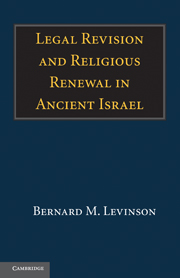Or, why religious history written by an insider for insiders is unsuitable for general academic consumption. Let me explain.
I've been reading Lawrence Schiffman's history of Second Temple and Rabbinic Judaism
From Text to Tradition (Ktav, 1991). If it weren't on my prelims reading list, I would've put it down long ago. The simplistic ease with which Schiffman uncritically reports tradition as history raises the question of how well religious insiders can be historical critics of their own faith tradition. The question is not can they or should they because I think they can and they should, but I think all sources need to be evaluated critically, even sacred or semi-sacred texts. There is value in examining your argument and evidence from the perspective of an outsider just to see if your explanation of the data makes sense (
HT: NT Pod 21; I'm indebted to Mark Goodacre for this observation).
It's more than a little ironic that while Schiffman claims to take a critical approach to his sources as a historian (pp. 4-5), his historical account is dominated by an uncritical acceptance of the story of Judaism as told by the Bible and rabbinic sources (refracted somewhat through the lens of contemporary Judaism). For example, the "historical sketch" began on p. 17 narrates the migration of the patriarchs as if it was perfectly reasonable historiography to simply retell the biblical account. As I read, I was almost immediately struck by Schiffman's acceptance of the claim of continuity put forth by Jewish tradition:
Behind the continuity so often asserted by the tradition there is a complex development that we seek to uncover. The existence of such a history should in no way be taken as a challenge to the affirmations of continuity made by the Jewish tradition. On the contrary, continuity can only be achieved in a tradition which adapts and develops. . . . Because we recognize the underlying continuity we see no reason to avoid the occasional use of the term 'Judaism' to describe the religion of the Hebrew Bible, the earliest stage in the history of Judaism." (p. 3)
If anything, recent research on Israelite religion has concluded it was nothing like what we recognize now as Judaism. Personally, I would hesitate to use the term Judaism at all before Ezra-Nehemiah.
Now we all have areas where in practice we diverge from our stated methodological principles, but the juxtaposition of statements like "before any source can be used, it must be approached critically, and the extent of its reliability must be carefully evaluated" (p. 5) with later statements like "the Romans saw at least some of the rabbis, most notably Yohanan ben Zakkai, as leaders with whom they could deal" (p. 168) reveals a striking methodological incongruity. Rather than critically evaluating his sources, Schiffman appears to be an apologist for the traditional model of the development of Judaism as presented by the classical sources. More current research on tannaitic Judaism suggests tannaitic influence was historically much less normative and dominant before the Babylonian Talmud than the sages themselves claim. In other words, the only evidence we have of their power and influence comes from the texts they wrote telling us about their power and influence.
But Schiffman appears unaware of any uncertainty regarding the power the rabbis claimed for themselves. The prominence of the 1st century sages as leaders of the Jewish community and representatives to Rome is reported as historical fact (pp. 168-169). In the quote above, is Schiffman uncritically accepting the rabbinic legend about b. Zakkai and Vespasian as a historical fact? The way b. Zakkai is mentioned by name leads me to suspect his source is the legend found in Avot d'R. Natan ch. 4 (pp. 35-37 in Goldin's translation, Yale, 1955.)
The legend, in brief: Yohanan b. Zakkai has himself smuggled out of besieged Jerusalem in a coffin and carried to Vespasian. When he jumps out of the coffin, Vespasian recognizes him as the renowned Yohanan b. Zakkai and offers to give him whatever he wants. Ben Zakkai replies that all he really wants is Yavneh so he can have a place to teach his disciples, establish a prayer house, and perform all the commandments. Vespasian gives him permission, and the school at Yavneh is traditionally understood as the starting point of rabbinic Judaism.
That I have to guess at what his source was brings out the other major flaw with this work--the total absence of direct citation of either primary or secondary sources. Each chapter has a bibliography, but the lack of documentation makes this book a poor choice for scholarly use. It is difficult to assess his critical use of sources when he rarely mentions where he's getting his information. Now I doubt this text was ever intended for a scholarly audience. It appears to be a popular distilling of Schiffman's expertise on second temple and rabbinic Judaism published for a Jewish audience by a Jewish press.
So is it unreasonable to expect a religious insider writing for his co-religionists to attempt some semblance of objective critical evaluation of his source material?
At any rate, I will be recommending the removal of this book from our PhD reading list. It is not valuable for scholarly work on ancient Judaism because of its lack of documentation and interaction with primary and secondary literature and his oversimplified presentation of the development of Judaism, heavily influenced by the tradition which is itself the object of study.













 Since I'm kind of collecting books on Genesis lately (Walton's Lost World of Genesis One, Smith's Priestly Vision of Genesis 1 to name a couple), I was pleased to receive a review copy of this new book from Free Press--
Since I'm kind of collecting books on Genesis lately (Walton's Lost World of Genesis One, Smith's Priestly Vision of Genesis 1 to name a couple), I was pleased to receive a review copy of this new book from Free Press--




